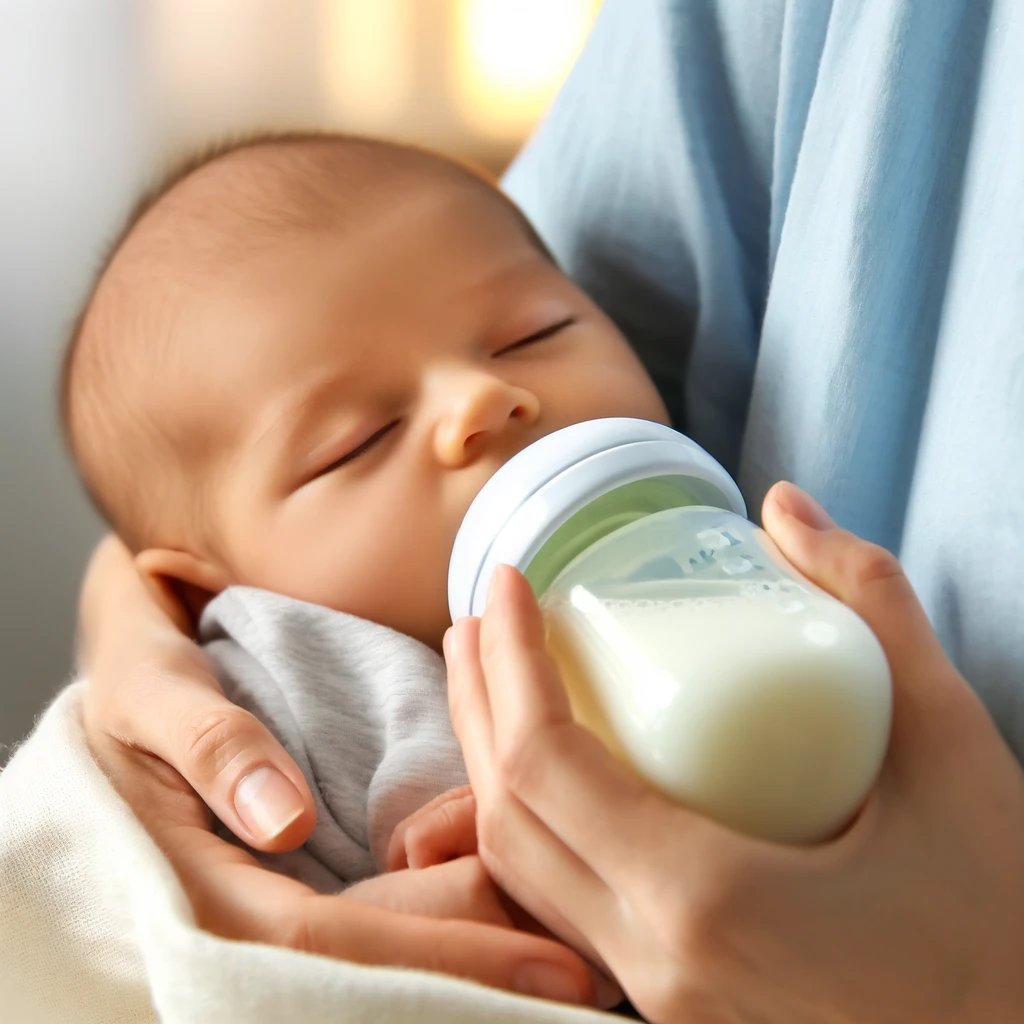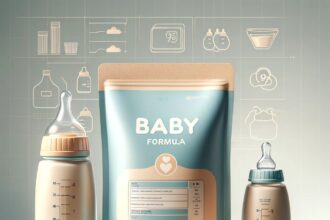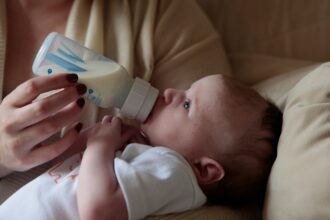Necrotizing Enterocolitis (NEC): Practice Essentials, Background, Etiology
Overview Necrotizing Enterocolitis (NEC) typically happens during the second and third week in premature babies – a condition affecting the gut from mucosal damage up through thick-thick necrosis. NEC has fatalities of 50% or above for newborn babies under 1200 pounds and occurs primarily during term and soon-term babies.
The link between baby food and necrotizing enterocolitis (NEC) has been a growing concern for parents and medical professionals alike. NEC is a serious intestinal disease that primarily affects premature infants, causing inflammation and, in severe cases, can lead to death. Recent studies have highlighted the potential risk posed by certain baby foods, especially those containing cow’s milk-based formulas. Understanding these risks is crucial for parents making decisions about their infants’ nutrition.
At Mass Tort America, we understand the anxiety and fear that comes with ensuring your baby’s health and well-being. Our team is dedicated to helping families navigate the complex landscape of NEC-related concerns, providing legal support to hold manufacturers accountable. If your child has been affected by NEC linked to baby food, we are here to offer guidance and support every step of the way.
What is Necrotizing Enterocolitis (NEC)?
Necrotizing enterocolitis (NEC) is a serious gastrointestinal problem that mostly affects premature infants. A serious digestive disorder is usually found in pregnant women and children. It inflames the intestine and causes death. In the intestines of babies, there can be holes in the abdomen. Bacteria can enter through a hole in the stomach cavity. NEC usually starts developing in 2 to 5 days after pregnancy – a month. Occasionally NEC occurs at a small infant’s age. Some people suffer from a serious and fatal illness. It involves infection and inflammation that causes destruction of the bowel (intestine) or part of the bowel. The disease can develop within the first two weeks of life, particularly in premature or sick babies. Symptoms include abdominal swelling, feeding intolerance, and bloody stools.
The exact cause of NEC is unknown, but several factors contribute to its development, including premature birth, bacterial infections, and formula feeding. Infants fed with formula, especially those based on cow’s milk, are at higher risk compared to those who are breastfed. The disease’s severity can range from mild discomfort to severe, life-threatening complications requiring surgery.
Understanding the risk factors and early signs of NEC is vital for parents and caregivers. Prompt medical attention can significantly improve outcomes, making it essential to recognize symptoms early and seek immediate care. Keeping informed about NEC and its potential links to baby food can help in making safer nutritional choices for infants.
Necrotizing enterocolitis typically develops within one week, usually after a milking cycle.
Although their importance, necrotizing enterocolitis (NECC) is not always a seasonal phenomenon. NEC appears to follow epidemic patterns throughout nurseries suggesting a bacterial etiology, but no specific causes have been determined. Population surveys conducted in the U.S. have shown relatively stable incidences of the disease between 2 – 4 deaths yearly per 1,000 live births. Historically, this disease is seen at the lowest birth rate of newborns.
Link Between Baby Food And NEC
Recent studies have shown a concerning connection between certain baby foods and the development of NEC. Specifically, cow’s milk-based formulas have been linked to an increased risk of this dangerous condition. These formulas, often given to preterm infants, can introduce harmful bacteria into the gut, leading to inflammation and, eventually, NEC.
The scientific community has been investigating this link for several years. Research indicates that babies fed with cow’s milk-based formulas are significantly more likely to develop NEC than those who are exclusively breastfed. This has led to growing calls for stricter regulations and more comprehensive warnings on formula packaging to inform parents of these risks.
Parents should be aware of these findings when choosing a feeding method for their infants. Consulting with healthcare providers about the safest options, especially for premature babies, is crucial. By staying informed and proactive, parents can better protect their children from the risks associated with NEC and certain baby foods.
Although the cause for this disorder is unknown, it is thought that a decrease in blood flow to the bowel keeps the bowel from producing mucus that protects the gastrointestinal tract. Bacteria in the intestine may also be a cause. Those with a higher risk for this condition include Premature infants. Infants who are fed concentrated formula infants in a nursery where an outbreak has occurred Infants who have received blood exchange transfusions Necrotizing Enterocolitis. They do know that premature infants have lungs and intestines that are weak and less mature than those of full-term babies. That means their bodies don’t move blood and oxygen around like they should. They also have problems breaking down their food and fighting infection. Also, premature infants have an undeveloped immune response to factors such as bacteria or low blood flow. An imbalance in immune regulation appears to be involved in NEC. The disease occurs in nearly 10 percent of premature infants but is rare in full-term infants. Although the exact cause of NEC is still unknown, there are many theories to explain why NEC affects mainly premature infants.
Right now, there’s no way to prevent NEC. But studies show that babies who were only fed breast milk (no formula), were less likely to develop this disease. That’s why doctors recommend feeding at-risk infants breast milk, starting with small amounts. In very low birth weight infants, breastfed infants have a lower incidence of necrotizing enterocolitis. Mothers of these infants should be counseled on the benefits of breastfeeding Many NICU’s are now using donor breast milk when there is none available from the mother in order to reduce the incidence of NEC.
Signs And Symptoms
In premature babies NEC is usually found within two months of birth and onset is inversely related to gestationally-aged babies. In premature infants, babies born before 32 weeks gestation, the median reported period is 1 – 1 day but the onset can occur from 1 month. Initial symptoms are subtle but may include a variety of symptoms: vomiting diarrhea delayed digestion abdominal distention abdominal discomfort, bowel swelling, and abdominal walls damaged or enlarged. Primarily affecting premature infants or sick newborns, it occurs when the lining of the intestinal wall dies and the tissue falls off. Although the cause for this disorder is unknown, it is thought that a decrease in blood flow to the bowel keeps the bowel from producing mucus that protects the gastrointestinal tract. This can lead to the death of intestinal tissue and, in some cases, a hole (perforation) in the intestinal wall. In NEC, the intestine can no longer hold waste. So bacteria may pass into the bloodstream and cause a life-threatening infection.
NEC occurs primarily during the maternity period at the age of 1 month when babies eat formula versus breast milk in the absence of breast milk. Typically the baby will not take the feedings and cannot handle the food at all. It may cause abdominal distention or vomiting of bile green (bloating).
Necrotizing infection Symptom of child septicemia blood stools. Intolerant food habits. The symptoms of diarrhea are green. Infections are often a sign of lethargy.
What Is The Common Cause Of Necrotizing Enterocolitis(NEC)?
Necrotising Enterocolitis is usually a symptom of two to three weeks of life. Several risk factors are identified, although pregnancy weight is low and formula feeds are identified. In particular, higher osmotic strength formula feed was implicated.
How Is Necrotizing Enterocolitis Diagnosed?
The diagnosis is confirmed in a child who has NEC symptoms. These look like gas bubbles or streaks appearing in the intestine. Sometimes the air escapes from the stomach and reaches the large liver vessels and stomach. Occasionally a doctor inserts needles in the belly to remove the liquid from the stomach and check for the presence.
Diagnostic testing: Blood tests are performed to determine whether the organism has a virus infection. This test is used to check blood on a baby’s poop. It detects unidentified blood. The abdominal scan can reveal signs of NEC, including bubbles around the gastrointestinal tract and the abdomen. A diagnosis can be confirmed if an abnormal gas pattern shows up on an X-ray. This looks like a bubbly or streaky appearance of gas in the walls of the intestine. In severe cases, air escapes from the intestine and shows up in the large veins of the liver or the abdominal cavity. A doctor may insert a needle into the belly to withdraw fluid to see whether there is a hole in the intestine.
How Long Does Necrotizing Enterocolitis (NEC) last?
The symptoms range from loose stool to dysentery involving bloody and purulent swollen intestine. Symptoms appear 8 to 24 days after consuming contaminated foods or beverages. The disease usually lasts 3-4 days if a patient manifests gastroenteritis or two to three days if he develops enterocolitis.
What Is The Cure For Necrotizing Enterocolitis (NEC)?
NEC is a symptomatic gastrointestinal disease causing a significant increase in infant mortality among women. Infants whose peritones were perforated were typically treated and recent interest in peritoneal drainage was considered a viable option for these problems.
NEC treatment generally comprises abdominal rest and decongestion, systemic antibiotics, and parenteral nutritive therapy. Perforations are usually a procedure used for infants, but recent attention has arisen to provide secondary peritoneal drainage alternatives.
The mildest cases rarely require tests or treatment. Often antidiarrhoeal drugs are prescribed. Occasionally hydration is required with an electrolyte solution for body fluid loss or insufficient fluid supply. Symptoms include diarrhea and difficulty breathing through an arterial vein or bowel movement.
The dead bowel tissue is removed and a colostomy or ileostomy is performed. The bowel is then reconnected several weeks or months later when the infection and inflammation have healed. Prognosis Necrotizing enterocolitis is a serious disease with a death rate approaching 25 percent. Early, aggressive treatment helps improve the outcome.
Frequent exams and abdominal X-rays a consultation with a pediatric surgeon to discuss surgery, if needed in severe cases, surgery may be needed right away The baby’s poop is watched for blood and the baby’s belly size is checked regularly. A hole in the intestine or an infection in the abdominal cavity will make the belly swell. If a baby’s belly is so swollen that it affects breathing, extra oxygen or a breathing machine (ventilator) will help the baby breathe. At the time of surgery, the surgeon may find portions of the intestine with gas bubbles in the intestinal wall or portions of the intestine that is frankly necrotic perforated. The operation consists of removing the piece of intestine that has ruptured or is about to rupture.
Intestinal Stricture
It occurs in infants with or without prior perforation. Intestinal strictures occur when the ischemia area heals resulting in fibrosis and scars and fibrosis are formed in the abdomen. Oftentimes, stricture begins on the right colossal colon followed by a terminal ileus. Intestinal rigidity is the most widespread in babies undergoing nonoperatively treatment, as the infant treated surgically often undergoes contrast enema before closing the ostomy and resects all of the areas of strictures when the ostomy closes.
Cholestatic Liver Disease
Cholestasis liver disease has several factors and occurs from long periods of hunger or from total parent-child food. This condition possesses an elevated hematological profile and elevated aminotransferase and bilirubin levels. Treatment involves starting the enteral feeding program if it can stimulate the bowel movement.
Neurodevelopmental Disorders
Babies that survived NEC may experience neurodevelopmental disorders. 27 Almost 80% of the infants that survived NEC are unable or ill to communicate or use language. In matched cohorts, however, non-gastrointestinal sequelae have similar incidences and suggest that neuro-developmental problems may result from prematurity, not just NEC itself.
Legal Actions and Accountability
The rising awareness of the connection between NEC and baby food has led to an increase in legal actions against manufacturers. Families affected by NEC are seeking justice and compensation for the harm caused by these products. These lawsuits aim to hold manufacturers accountable for failing to warn about the potential dangers of cow’s milk-based formulas.
Legal actions have highlighted the need for greater transparency and accountability in the baby food industry. Many of these lawsuits argue that manufacturers did not adequately inform parents and healthcare providers about the risks associated with their products. As a result, families are pursuing claims to cover medical expenses, pain and suffering, and other related costs.
Engaging in legal action can be a complex and daunting process, but it is a crucial step toward obtaining justice for affected families. Understanding your legal rights and the potential for compensation can help in making informed decisions about pursuing a claim against baby food manufacturers.
Mass Tort America: How Can We Help?
At Mass Tort America, we are committed to supporting families impacted by NEC linked to baby food. Our experienced legal team understands the intricacies of these cases and works tirelessly to ensure that manufacturers are held accountable for their actions. We offer comprehensive legal services to guide you through the process, from initial consultation to final resolution.
Choosing to work with Mass Tort America means opting for a dedicated team that prioritizes your family’s well-being. We provide personalized support, leveraging our expertise to build a strong case on your behalf. Our concierge team is available to help coordinate every aspect of your legal journey, ensuring you receive the care and attention you deserve.
If your child has been affected by NEC related to baby food, we encourage you to contact us today. Call us at 800-356-4338 or visit our contact form at https://masstortamerica.com/contact/ to schedule a consultation. Let Mass Tort America help you seek the justice and compensation your family deserves.



















